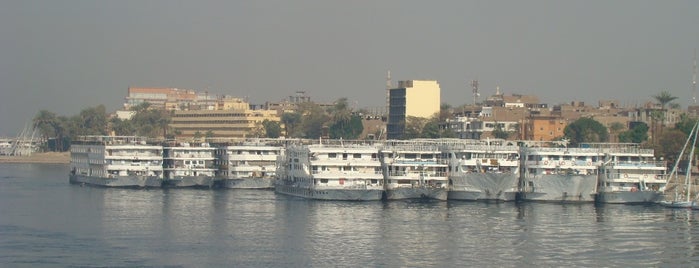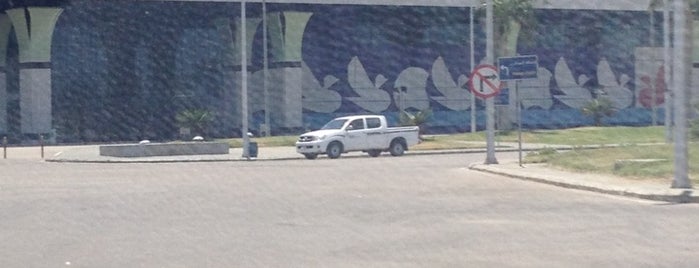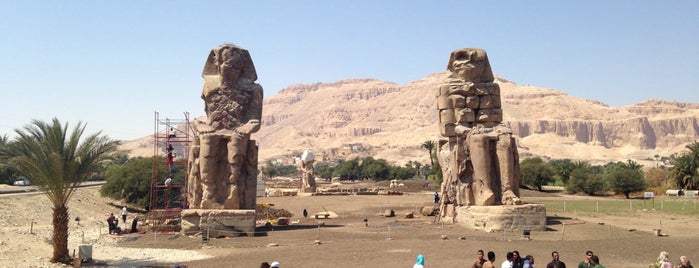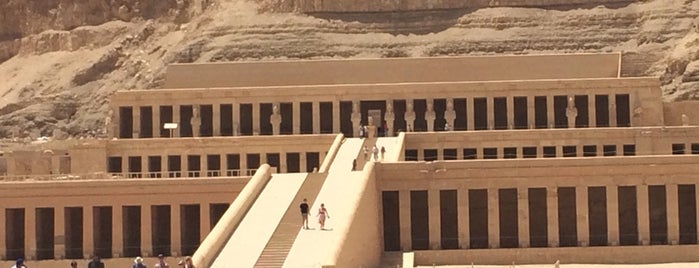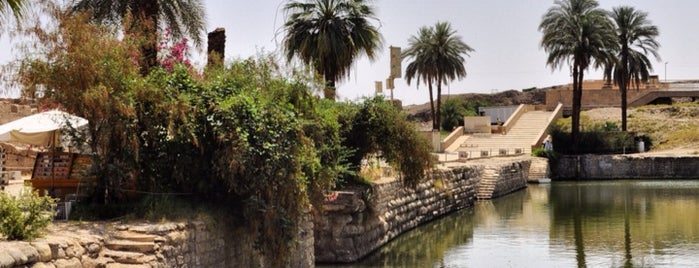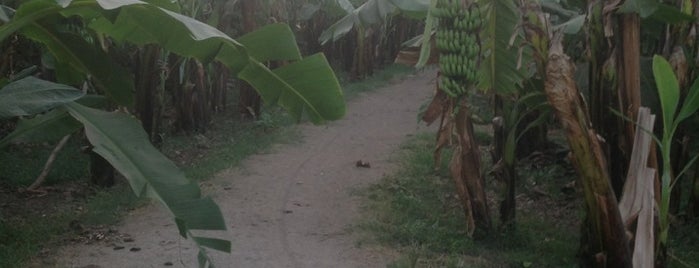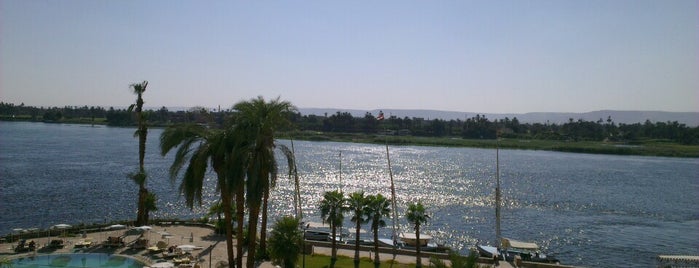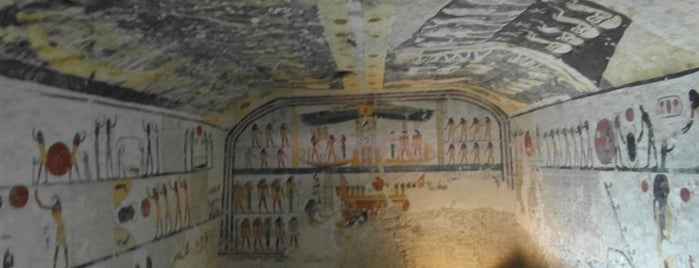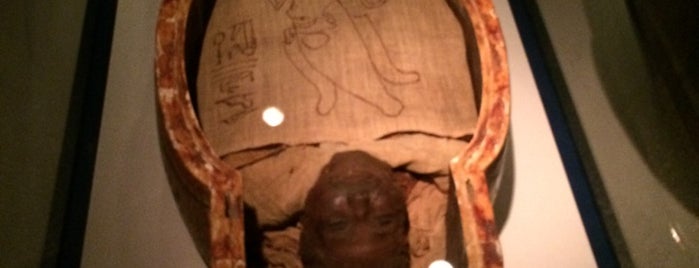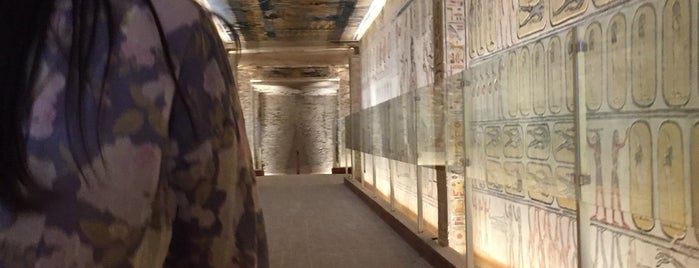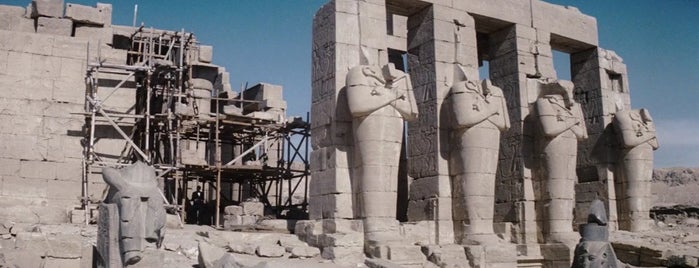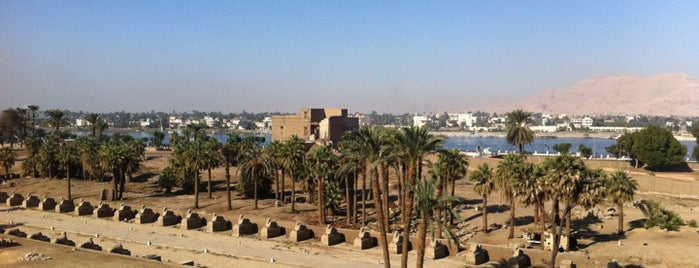![]() This is our 1st stop on our way to the necropolis: these 2 seated statues are all that remain of what was once the largest mortuary temple in the necropolis, that of Amenhotep III. Read more.
This is our 1st stop on our way to the necropolis: these 2 seated statues are all that remain of what was once the largest mortuary temple in the necropolis, that of Amenhotep III. Read more.
![]() The Mortuary Temple of Hatshepsut is also known as Deir el Bahri is the most beautiful temple in the necropolis. The terraced sanctuary was designed by the queen's architect Senmut. Read more.
The Mortuary Temple of Hatshepsut is also known as Deir el Bahri is the most beautiful temple in the necropolis. The terraced sanctuary was designed by the queen's architect Senmut. Read more.
![]() This great national monument of Egypt has no equal. It is not a single temple, but temple within temple, shrine within shrine. We will visit it at the end of our trip as it requires plenty of time. Read more.
This great national monument of Egypt has no equal. It is not a single temple, but temple within temple, shrine within shrine. We will visit it at the end of our trip as it requires plenty of time. Read more.
![]() This beautiful temple we can visit optionally at the end of our trip. The temple was built on the east bank of the Nile by Amenhotep 3, “the Magnificent.” & was dedicated to the Theban triad. Read more.
This beautiful temple we can visit optionally at the end of our trip. The temple was built on the east bank of the Nile by Amenhotep 3, “the Magnificent.” & was dedicated to the Theban triad. Read more.
![]() Deep in the limestone hills to the north-west of Deir el Bahri is a remote valley. Here are the pharaohs of the 18th-20th Dynasties chose their eternal resting place. We will visit at least 4 tombs. Read more.
Deep in the limestone hills to the north-west of Deir el Bahri is a remote valley. Here are the pharaohs of the 18th-20th Dynasties chose their eternal resting place. We will visit at least 4 tombs. Read more.
![]() This tomb can be optionally visited during your Valley of the kings tour if open to public, requires additional ticket. Read more.
This tomb can be optionally visited during your Valley of the kings tour if open to public, requires additional ticket. Read more.
![]() One of the longest rivers in the world and the best one to take a Nile cruise to explore the ancient Egyptian history. Read more.
One of the longest rivers in the world and the best one to take a Nile cruise to explore the ancient Egyptian history. Read more.
![]() Can be optionally visited in the evening at the end of the main Luxor city tour. Read more.
Can be optionally visited in the evening at the end of the main Luxor city tour. Read more.
![]() Now available even 2 tombs! One original and one replica. So, it's up to you which one to visit, but in all cases it is an optional activity and involves additional ticket cost. Read more.
Now available even 2 tombs! One original and one replica. So, it's up to you which one to visit, but in all cases it is an optional activity and involves additional ticket cost. Read more.
![]() This beautiful temple is usually visited if you stay more than 2 days in Luxor. Do not skip the temple as it is very beautiful and has many coloured scenes preserved on its walls. Read more.
This beautiful temple is usually visited if you stay more than 2 days in Luxor. Do not skip the temple as it is very beautiful and has many coloured scenes preserved on its walls. Read more.
![]() Small temple at the bottom of the valley is usually skipped by visitors. But it worth a visit since many interesting things had been discovered there in the past years. Read more.
Small temple at the bottom of the valley is usually skipped by visitors. But it worth a visit since many interesting things had been discovered there in the past years. Read more.
![]() Recently re-discovered this avenu now connects Luxor temple with Karnak temple as thousand of years ago. Read more.
Recently re-discovered this avenu now connects Luxor temple with Karnak temple as thousand of years ago. Read more.
